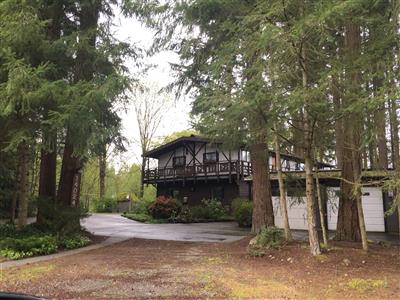They shouldn't tell you to keep or remove the trees? If they write up a report that assigns a tree "moderate" risk and recommends removal, is that unprofessional? Does it matter that the report is used to get HOA permission to cut the tree down?
Correct. A risk assessor's job isn't to tell you how much risk you are willing to tolerate. Their job is to tell you what level of risk the tree presents. It is, in my opinion, NOT unprofessional to assign a "moderate" risk to a tree. It IS unprofessional to recommend removal.
Especially with a "moderate risk" tree. An extreme risk tree...that is a different story. The ISA training teaches that if the arborist encounters a tree that is identified to have an immanent risk of failure and there are targets in striking range, that the area should be flagged with caution tape and the owner/manager be notified immediately. Otherwise, it is explicitly not the assessor's place to make those decisions. Part of the report should present mitigation options (remove, prune, brace, etc...) and the resulting risk rating if each of those is carried out.
"Does it matter that the report is used to get...." As a professional assessor, it doesn't matter what the goal is. What matters is what level of risk the tree presents. It is my job to evaluate the tree and report on my observations. To change the report because of the client's goals is, IMHO, a violation of professional ethics. No different than a doctor saying "well, if the goal is to get you a prescription for opioids, I just need to report that your pain is past a certain threshold" rather than diagnosing the pain and exploring treatment options.
Back to the moderate risk tree. I am not saying such a tree
shouldn't be removed. I'm saying it is not the assessor's place to make that decision. It is the duty of the owner/manager of that tree or, perhaps an ordinance or HOA rule specifies certain criteria. Even in that case, it is not the assessor's job to state whether a tree meets those criteria.
Example: I was called of assess a (very) large tree that has dropped some large branches. It was on the neighboring property of my client. My client's goal wasn't to have the tree removed, but they wanted to know what level of risk the tree presented. From there, they would take that information to the city because the city has a policy that allows them to force the removal of "dead, decayed, or otherwise hazardous trees." I told my client I am not a lawyer (he told me he is...), and I didn't participate in the writing of that ordinance, so I don't know what all that is intended to mean. I can find at least some decay in 99.99% of trees over 3" in diameter...is that what they meant? Not my place to say. My place is to assign a level of risk. In this example, the likelihood of failure is "probable" and the likelihood of impacting a target is "high". But the tree is received a "moderate" risk rating. How can that be? Because the "target" is a detached garage. The ISA standard says if the property damage would be "low to moderate" the consequences of failure are "minor". The detached garage is not a house. It is in good shape, but nothing to write home about. Relative to other structures, the cost to repair/replace would be "moderate". BUT, there is still a high likelihood that a neighbor's tree will damage the structure of another. Should the city force mitigation??? That is up to the lawyers, not me.
*What if, instead of the detached garage, there was a rundown empty shed. Should the city enforce that the same?
*If instead of the garage, it was a house, the risk rating would be "high". If the "moderate" tree impacting the detached garage is not actionable by the city ordinance, is this tree that would hit a house?
*If the likelihood of of failure was "Possible" instead of "Probable", and the target is a house (leading to a significant consequence), the tree is now a "moderate" risk tree. Should that be treated the same as the "moderate" risk tree that presented a (more likely) thread to the detached garage???





